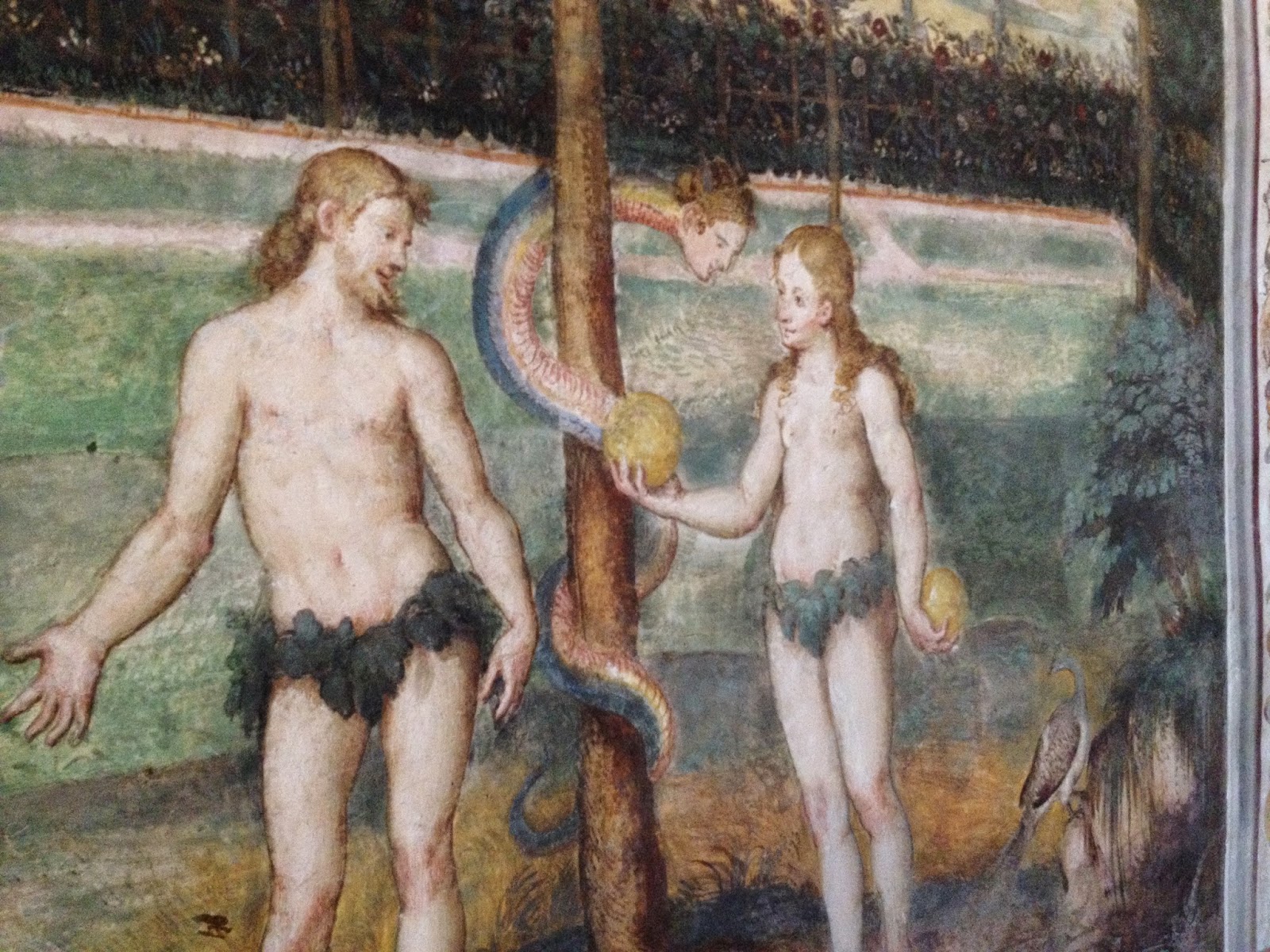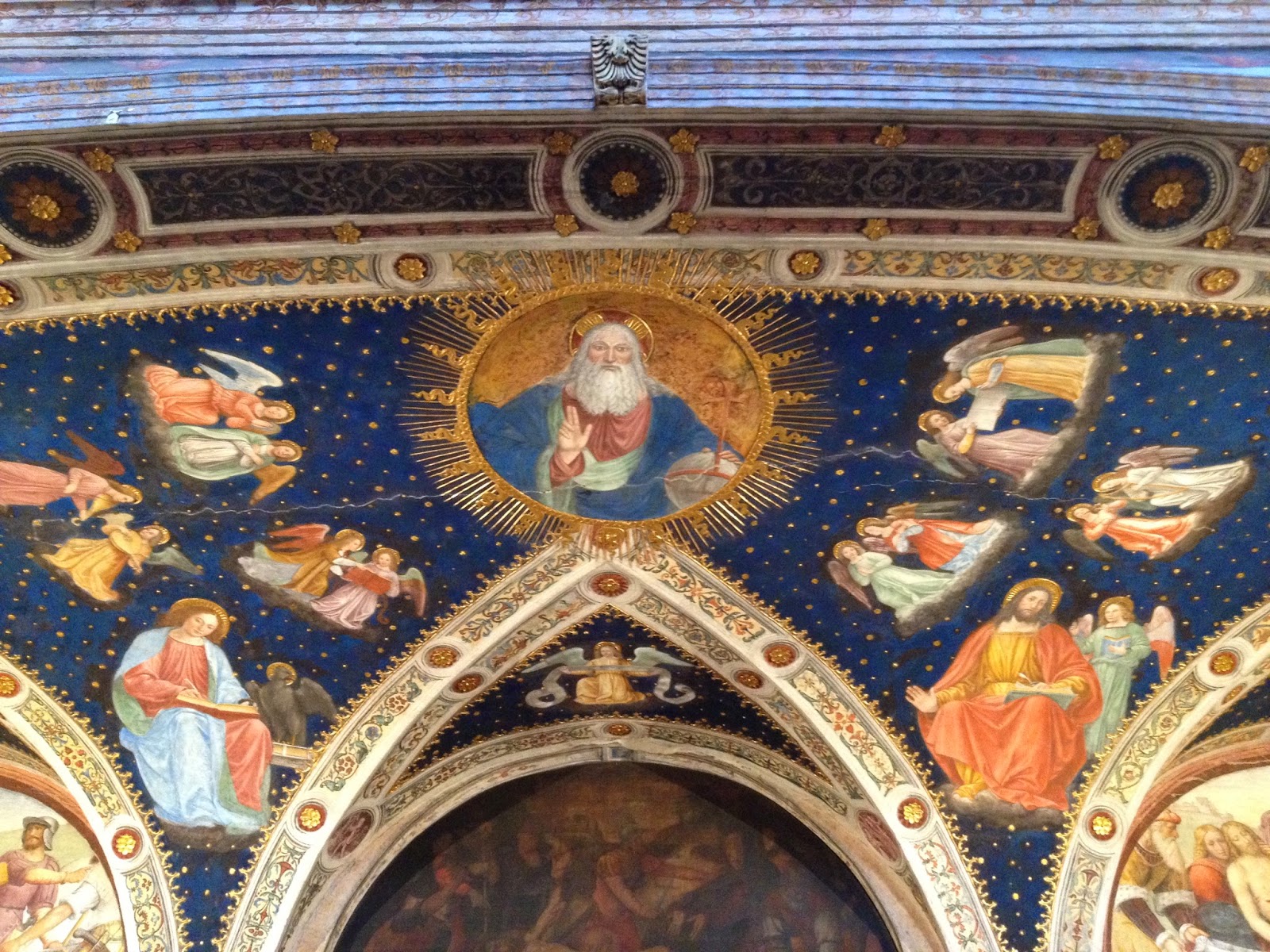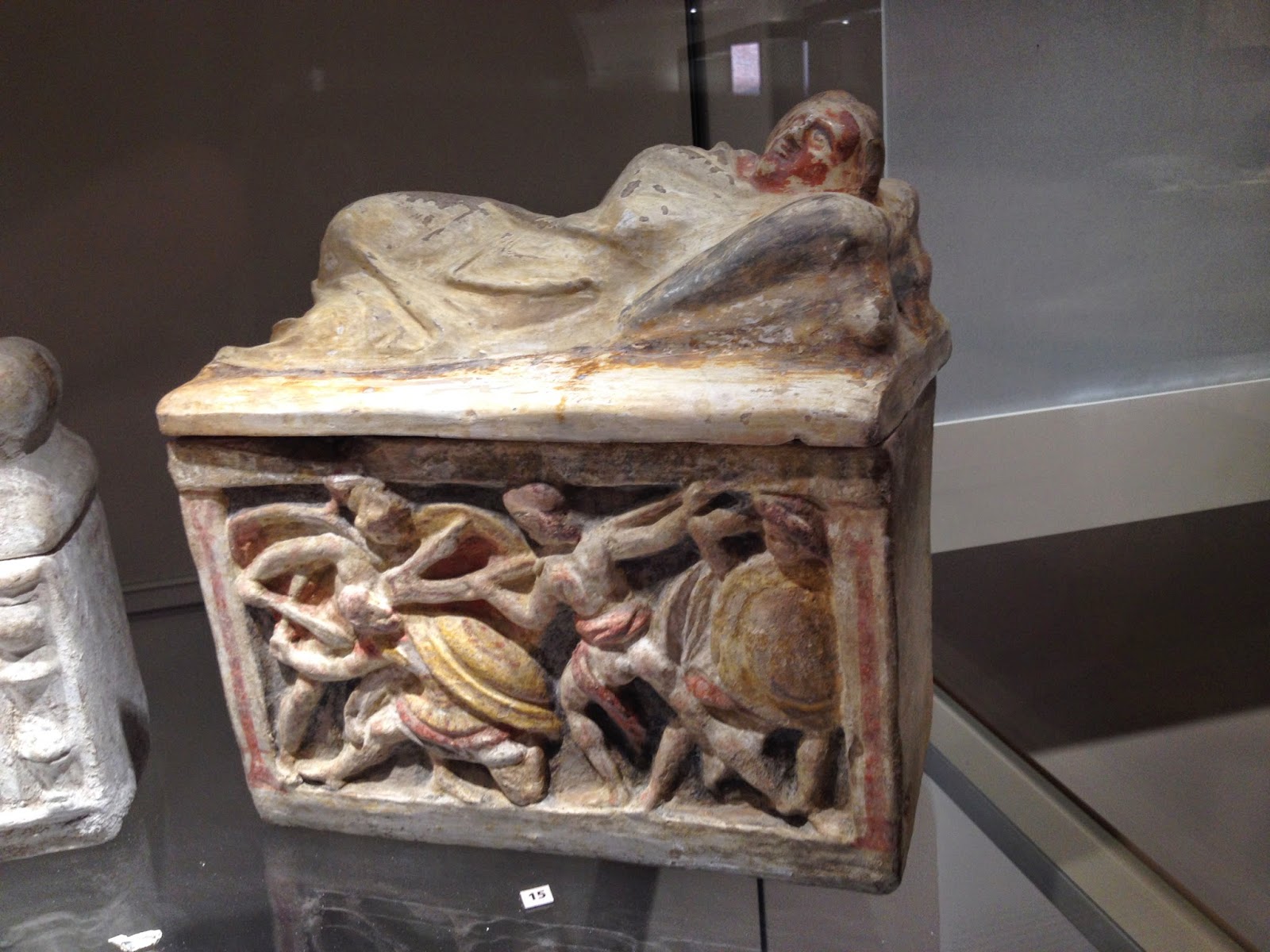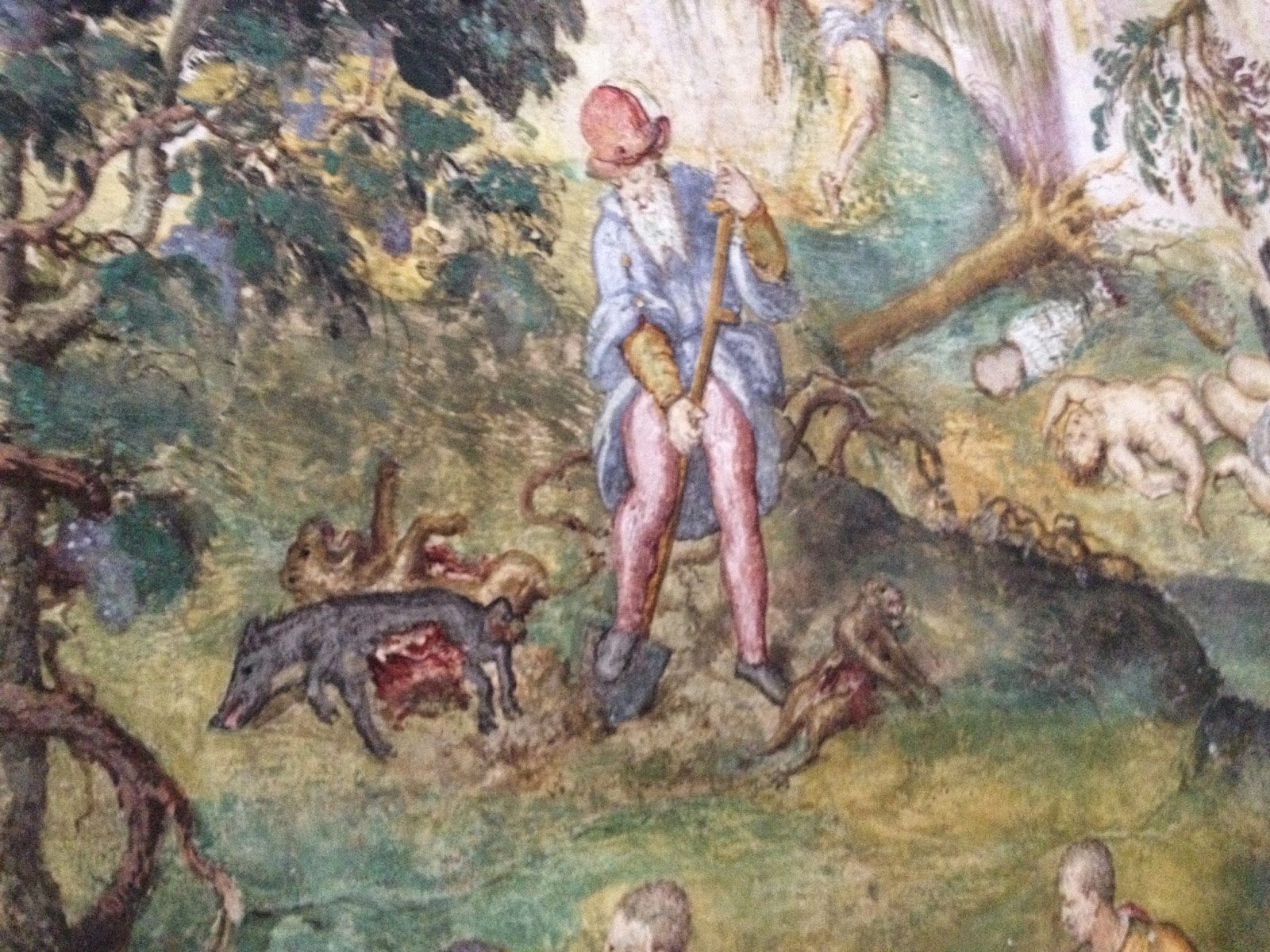So we took the subway and wandered a bit until we found this Museum, housed inside the San Maurizio al Monastero Maggiore. This is a part-church part-nunnery that came to house the museum sometime after being damaged in a World War II bombing. Walking in the door, there were a few artifacts (about 20) outside the actual museum. Sorry the formatting is off here, Blogger has very strange formatting issues when you want to make multiple columns of photos. I actually went in and manually added tables to each grouping of photos. This in turn pushed the sidebar navigation to the bottom of the page. Sorry about that. I've spent far too much time on this post as it is.
Remember, you can click the images to enlarge them.

|
 |
|
 |
The first two images are of some sort of water bearer. The last three are of a sarcophagus for a rich man. (Note: everything in the outside portion was from about 100 BC to 200 AD).

|
 |



Here's some very interesting Roman type from the first century AD. It was difficult to capture on camera, but the serifs felt implied - soft- rather than purposeful. When you step back, the serifs are prominent and make for a fantastic looking paragraph. But close up, the serifs almost look like the etcher happened to turn their tool as they made the next line. It gave me the vibe that serifs were influenced by the form they originally appeared on: a marble or clay medium etched by a stylus. Look at the third picture especially and see if you can tell what I mean.

|  | 
|

|  |
Next we walked into the actual Monastery. Because it was under reconstruction (EVERYTHING in the city is for Expo 2015), this part was free to see. The art here was from a much different time period as you can tell - Namely the 15th and 16th centuries.

| 
|  |
That's my shoutout to Professor Flaherty, who devoted a week or two of our Art History class to the issues of curating a piece without taking away from its original context. Digressing...
 |






Details of the Noah's Ark alcove. Above the three paintings is something else I recognized from Flaherty's class (The last two images). Correct me if I'm wrong, but this would be the Saint of the church holding up the building (in which these paintings are housed) and offering it to Jesus. My initial thought is that it was the man who put money behind the church, but the halo throws me off that idea.

|  |


More imagery from the church. The black and white image was from the candelabras in between the alcoves, in which there were many more drawings. I found this place exciting because I could recognize many of the stories without labels due to my upbringings as a Christian. Pictured is Mary leaving Bethlehem with Jesus, The Garden of Eden with strange human-faced serpent Satan, and the Binding of Isaac with an angel stopping Abraham's hand.
A panorama of the room. The alcoves are behind those brown barriers, and on the left is the ornate organ. I liked the organ because the door flaps reminded me of a gigantic triptych.

|  |
Next I'll show a wooden model of how Milan used to look. I've paired it with a map I found in the Metro subway, which may be difficult to see. Basically, they know exactly where the city walls were back in the times of the Roman Empire, and overlaid it with the current city. I can see where I live and where I visited in relation to the old city. In the metro map, the red line indicates the old city walls. The Duomo (built much later) is pictured for reference. I live JUST off the bottom of the map. The same setup can be seen in the wood model.
 |
Here I found an interesting read about why they find it important to explore old Milan. Basically, they say that ancient cities were founded based on the idea that there is good land inhabited by happy spirits, and bad land to be avoided inhabited by evil spirits. Milan was found in about the 5th century BC if I recall, and back then the pagans that made it believed it to be on good land. It had its own unique spirit with its own unique... spirits. It's important to try to keep the city's unique spirit. I wished the sign went on to talk about WHAT exactly that spirit was - what spirits the pagans found in the land of Milano. Maybe they don't know that exactly.
 |
The monastery where the museum was housed, in a diagram and out a window.
I will let the video speak for itself. The thing was scarier in real life than in the video, trust me. It was really quiet there.

|  |



More artifacts from later on in the museum, mostly from Ancient Greeks, but also leading up into the 6th century AD.
A satyr on a Greek krater. Go ahead and say that out loud. They didn't change the design much for Phil in Disney's Hercules.
Here is what I believe was the oldest thing in the museum, a figure dug up in Milan from the 5th century BC. Must have been made from the pagans that made the city. Also included in the picture is my old man hat.
Note that I said much less about the last few pictures because this part of the Museum was wholly in Italian. The first few parts had mostly Italian but some paragraphs of English, but they gave up the the last 3 rooms and relied on one language entirely.
 |
Lastly, we left the museum and walked into the monastery from another door. Yet another painting filled room followed. However, instead of alcoves filled with biblical stories, this room had alcoves filled with the stories of saints. There were either 6 or 8 alcoves in this room. I did not recognize the names of any of the saints except for John the Baptist. And Jesus, who strangely got his own alcove. It is possible that Jesus got his own because he was martyred like the rest and fit into their triptych structure. Each alcove had a left, center, and right side. The left was the 'beginning' of the saint- whether their birth (In John's case), or a life event that turned them to sainthood (I recall a female saint whose town seemed to be burning behind her). The center showed the saint's greatest achievement. Jesus' showed him rising from the grave. John's showed him baptising Jesus (The last 2 pictures. Note the dove that symbolizes purity of Jesus in the sky and God on the ceiling above the painting). For future reference, Jesus is Gesu in Italian.
And then we left. I will CERTAINLY not be doing such an in-depth look at every museum I visit, but this was the first and I haven't started school yet so I thought I could afford the time. Now it's almost like you've gone through the museum with me! For future museums I will post pictures in imgur albums like I have in the past. As I said, this one will probably be one of the most interesting to me as it is one of the oldest, showcasing the Roman Empire. Tell me what you think of my commentary in the comments!

















Wow, your like our own private museum curator. I do feel like I've actually been there now! Thanks!
ReplyDelete